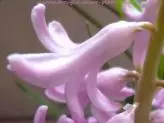Spring is here, and gardening may commence…
After a really brutal winter with snow, ice and such a wide variation in weather than normal, it’s a relief to see buds opening, birds singing and spring finally settling in.

Flowers that open early are such a welcome sight; they are a breath of fresh air, when all around is drab and bare.
More Spring Pages;
Some of the earliest plants to bloom are almost hesitant, just in case the weather turns again. Native shrubs have flowers, but they are so subtle you might miss them unless you look closely.
These tiny flowers may seem insignificant to us, but they are a valuable source of pollen and nectar for early emerging insects.

Wildcrafting starts early – there are many plants that can be gathered as soon as the snow is gone.

Many willows bloom early in the spring – they’re good nectar and pollen sources for many bees and other pollinators. That’s as good a reason as any to plant as many Salix as you can.
Find out how easy it is to root willows from cuttings.

Other native plants tell us when the weather is settled enough for planting a vegetable garden; the beautiful creamy white Amelanchier blooms are also known as ‘shadblow’ named for their appearance at the same time you may start looking for shad, a fish, to start moving up the now thawed out creeks.
They are also a sign that there most likely won’t be any more frost, and it’s time to plant a vegetable garden.

Flowers that emerge before the leaves are fully unfurled on deciduous trees are known as ‘ephemeral’ plants, and then once the shade gets too deep, they go dormant, the leaves shriveling and dying back before the heat of summer.
Native orchids are incredibly intricate and beautiful, with their amazing forms and stripes to guide bees to the nectar; in the process, they have to go past the pollen covered anthers, and transfer it in all innocence to the next bloom they visit.

Keep your eyes peeled for these special plants – their bloom time coincides with a lack of other plants flowering, and usually happens before the leaves of trees emerge. This gives them a chance to flower and ripen their bulbs before the shade of the trees becomes too deep.

Seeing all these signs of spring is balm to winter weary gardeners; the first few blooms may be hard to see at first, but once you start to look for them, they’re everywhere.




